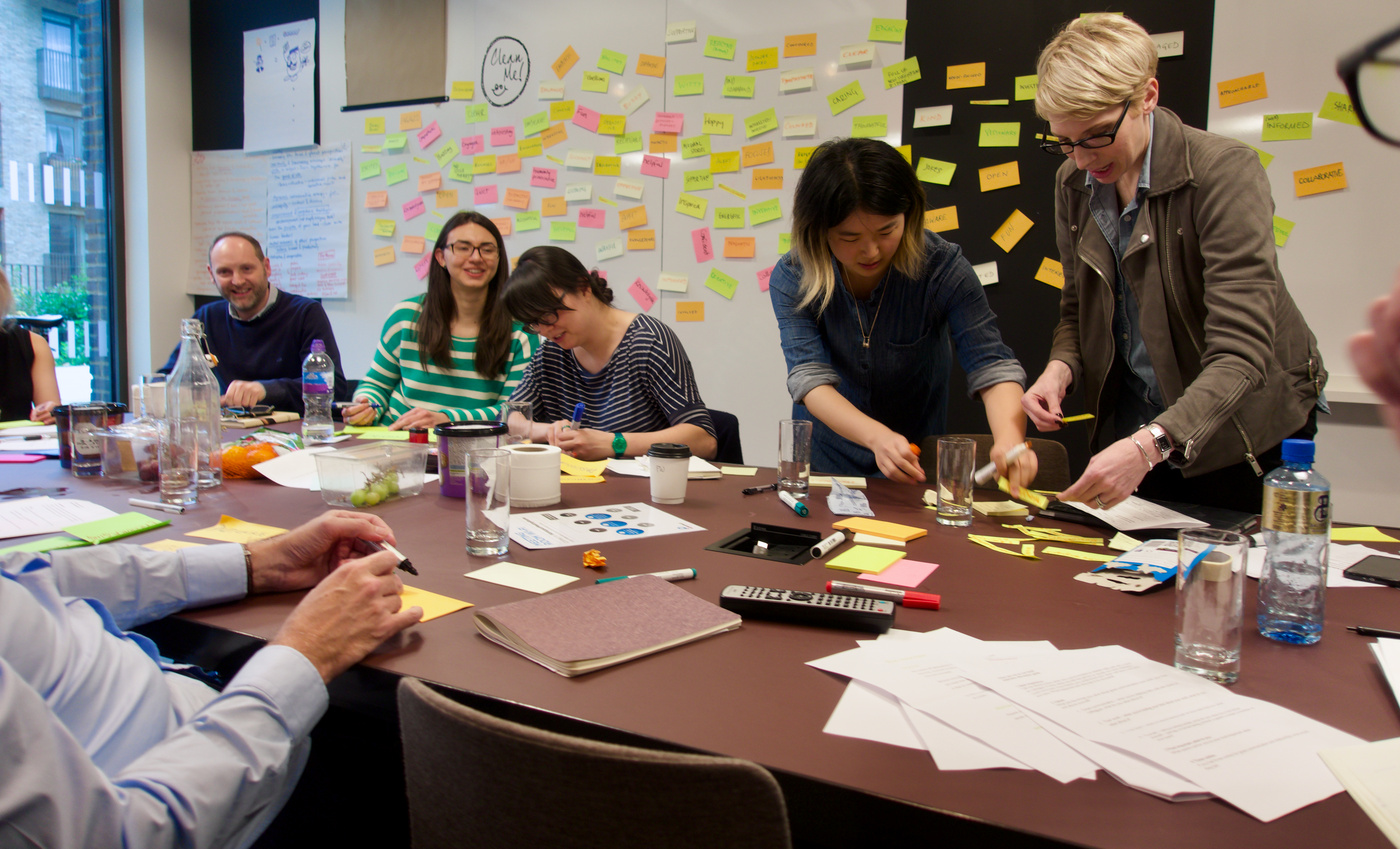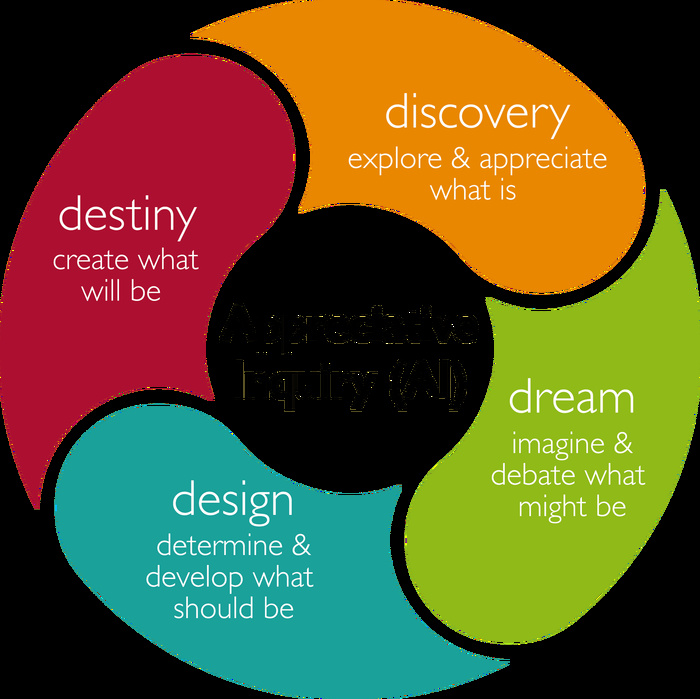How does Appreciative Inquiry work?

What’s Appreciative Inquiry?
Appreciative Inquiry (AI) inspires change by involving people in creating the kind of organisation they want to belong to.
It’s human nature to look for problems and try to solve them. This 'negativity bias' means we spend most of our time discussing what’s not working. This leads to stress, and when we’re stressed it’s hard to come up with new ideas or be open to change.
What’s different about AI?
Unlike traditional problem solving, rather than focusing on what’s broken and trying to fix it, AI focuses us on what’s already working – on strengths.
By exploring what’s working well, people immediately feel more confident and open to change. They’re able to generate ideas for improving their organisation. And because they’re involved, they own the solutions and are motivated to make them happen.
It’s not about positive thinking – AI accepts there are problems. But with AI we choose to look at things from a different angle.
What are the benefits of AI?
- It’s great team-building
- People feel heard
- People get to imagine a different future
- People feel able to choose how they contribute
- It supports people to take action
- It encourages positivity
What does it need to succeed?
- Senior management buy-in
- An organisation that lets people at all levels have ideas and take action
What are the main principles?
Social construction
Words create worlds – we create our own meaning through our conversations and interactions.
Simultaneity
Our first question is fateful – the moment we ask a question, we start change. So the language, tone and intention of the question direct the conversation.
Anticipation
Our current thinking creates our future reality. So if we imagine a positive future, we’re more likely to create it.
Poetic
What we focus on grows – we make sense of things through the stories we tell and hear. There are endless interpretations and we can choose to focus on what’s working.
Positive
Positive questions lead to positive change – by focusing on strengths we’re more resilient, open to change and able to take action.
Why does it matter to business?
As one CEO said to me recently:
'My focus is on making sure my colleagues wake up feeling engaged each day. That way they’ll give our customers the best experience.
AI helps you understand and build on your people’s strengths. By combining strengths with ambition, you can build a culture and brand that feels real. And that helps employees feel motivated and engaged.
Instead of just having some nice platitudes for your purpose, vision and values, people are more motivated to behave in the way you hope.
And that means you can actually do what you say.
How does it work?

This is where the 4D cycle comes in:
Discover
Discover what your people and your organisation are like at their very best. We ask people to tell stories about best past experiences, which means they re-experience some of the positive emotions they felt at the time.
This makes people feel open, confident and positive. They’re able to be creative about imagining how things could be in future.
Dream
Building on at your best, we ask people to imagine what it would look like if they were like that more of the time. They create visual representations, opening up different areas of thought and emotion. And then they translate the visions into words.
Design
With the visions in mind, we explore the things the organisation needs to focus on to achieve them.
Say you’re working on your purpose and values, they might say you need to look at leadership behaviours. It’s almost always what you’d have suggested they focus on. But because your people came up with the answers, they’re super-motivated to be part of the change.
Destiny
Finally, we take the areas your people identified under ‘design’, and work out specific project plans to make them happen.
What can this look like?
AI can be as simple as a single workshop for a representative group or involve the whole organisation, all at once, or in stages.
We usually run a small handful of workshops with a diagonal cross-section of the business (senior to junior, and most departments).
We usually support this by interviewing key people – directors and others – especially if they’re international.
What we learn in the workshops and interviews gives us a treasure trove of themes and stories, providing tremendous energy for defining purpose, vision, values, brand and behaviours. You can cover anything you need to tackle in your organisation.
How to find out more
It’s virtually impossible to convey the true power of Appreciative Inquiry in a short article. We’ve trained deeply in the nuances over many years, and it’s literally changed our lives and the way we consult. If you’re intrigued, drop Ben a line and he’ll help you see what it can do for you.
Thinking

2.5 min read
Tone of what? Voice and tone? Brand voice? Explain…
Brand personality is a powerful way to understand how your business relates to your customers…
Read